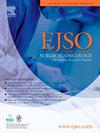Optimal timing of surgery after neoadjuvant chemoradiotherapy in rectal cancer: A retrospective analysis
IF 3.5
2区 医学
Q2 ONCOLOGY
引用次数: 0
Abstract
Background
Determining the optimal interval between neoadjuvant chemoradiotherapy (NCRT) and surgery in patients with locally advanced rectal cancer (LARC) remains crucial for improving treatment outcomes. Extending the interval may increase rates of pathological complete response (pCR), potentially enhancing survival and reducing recurrence.
Methods
This retrospective cohort study included 226 patients with LARC who underwent NCRT followed by surgery. ROC analysis was used to establish the optimal interval between NCRT and surgery for achieving pCR, and multivariate logistic regression assessed independent predictors of pCR. Spline regression further analyzed the relationship between surgery timing and the probability of pCR.
Results
ROC analysis identified 10.5 weeks as the optimal interval, showing increased pCR rates within this period. Multivariate analysis confirmed that surgery interval (OR = 2.603, P = 0.045) significantly predicted pCR. Both ROC and spline regression indicated that a 9–11-week interval maximizes pCR probability. Notably, the comparison of postoperative complications between groups with surgery intervals ≤10 weeks and >10 weeks showed no statistically significant differences (P = 0.518).
Conclusion
An interval of 9–11 weeks between NCRT and surgery optimizes pCR rates without increasing postoperative risks. This timeframe may serve as a favorable window for surgical intervention to enhance outcomes in rectal cancer patients.
求助全文
约1分钟内获得全文
求助全文
来源期刊

Ejso
医学-外科
CiteScore
6.40
自引率
2.60%
发文量
1148
审稿时长
41 days
期刊介绍:
JSO - European Journal of Surgical Oncology ("the Journal of Cancer Surgery") is the Official Journal of the European Society of Surgical Oncology and BASO ~ the Association for Cancer Surgery.
The EJSO aims to advance surgical oncology research and practice through the publication of original research articles, review articles, editorials, debates and correspondence.
 求助内容:
求助内容: 应助结果提醒方式:
应助结果提醒方式:


